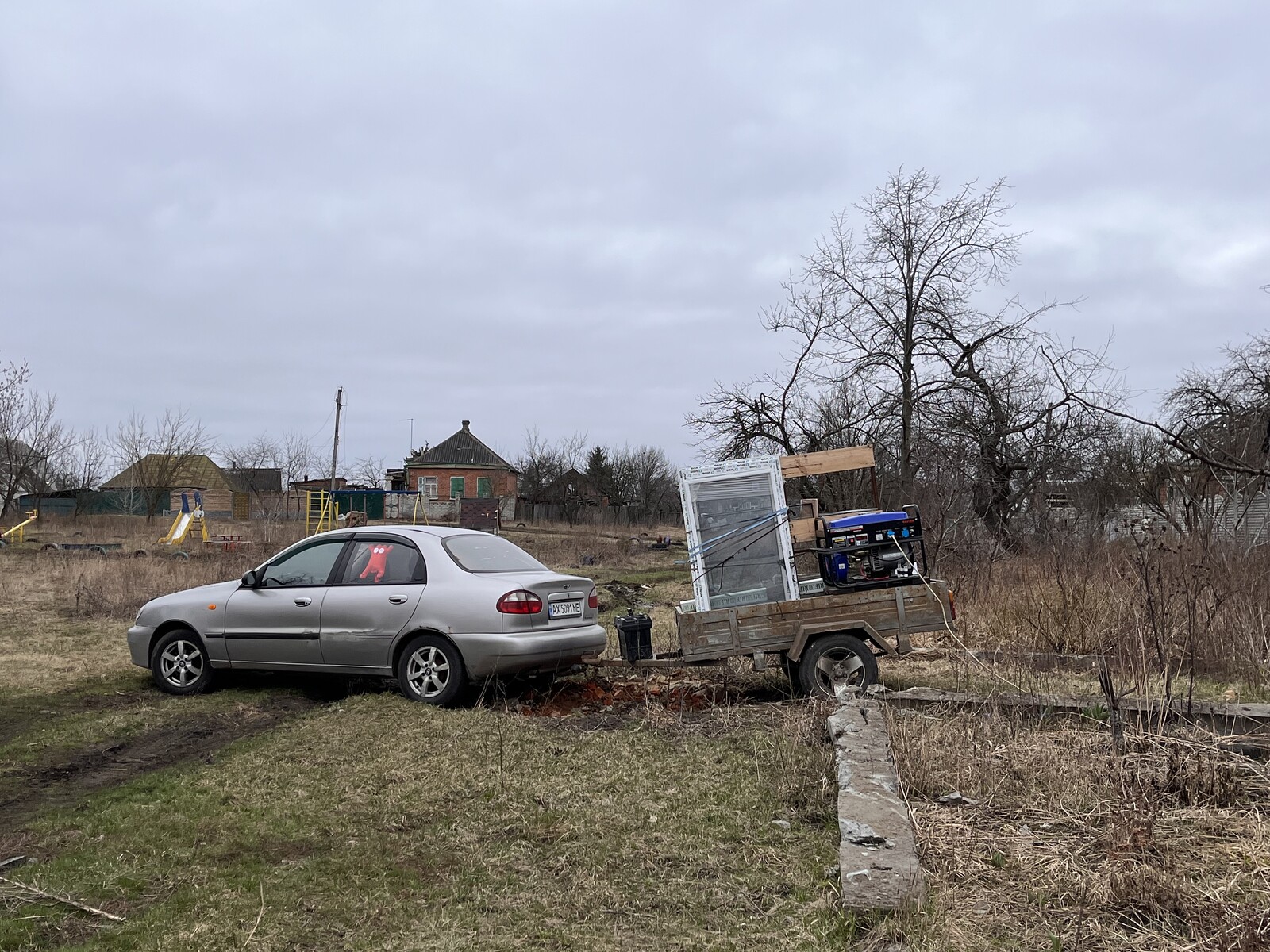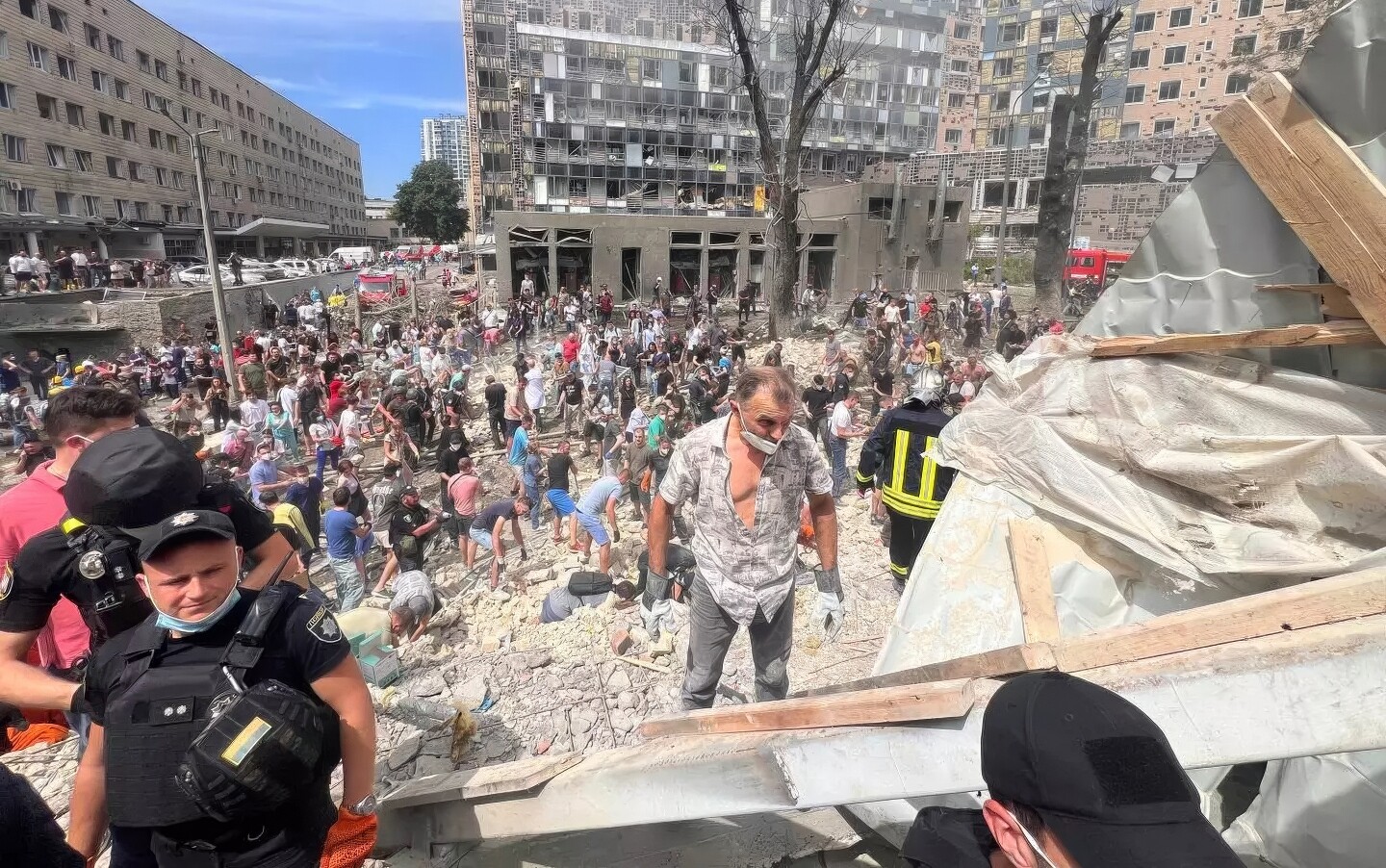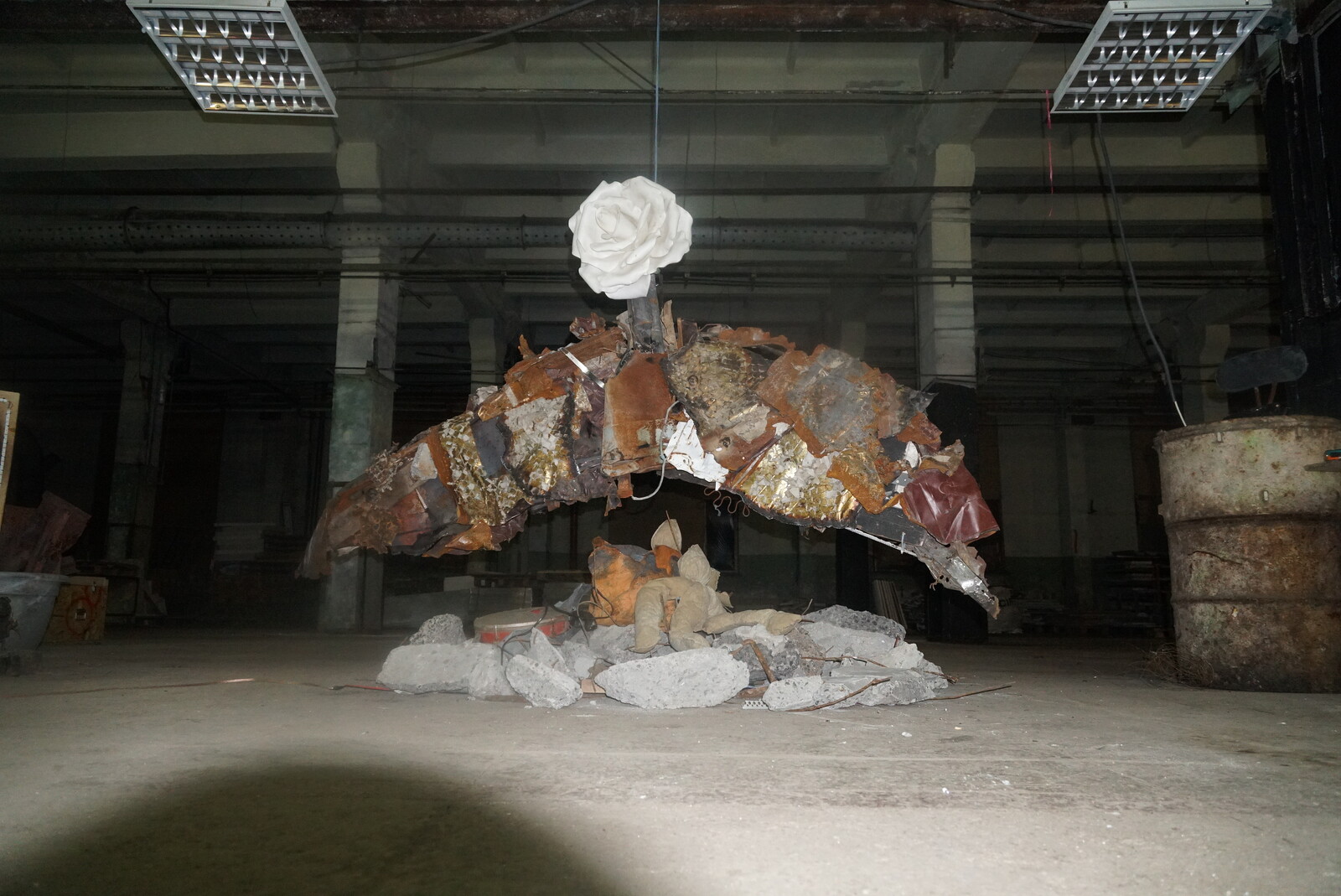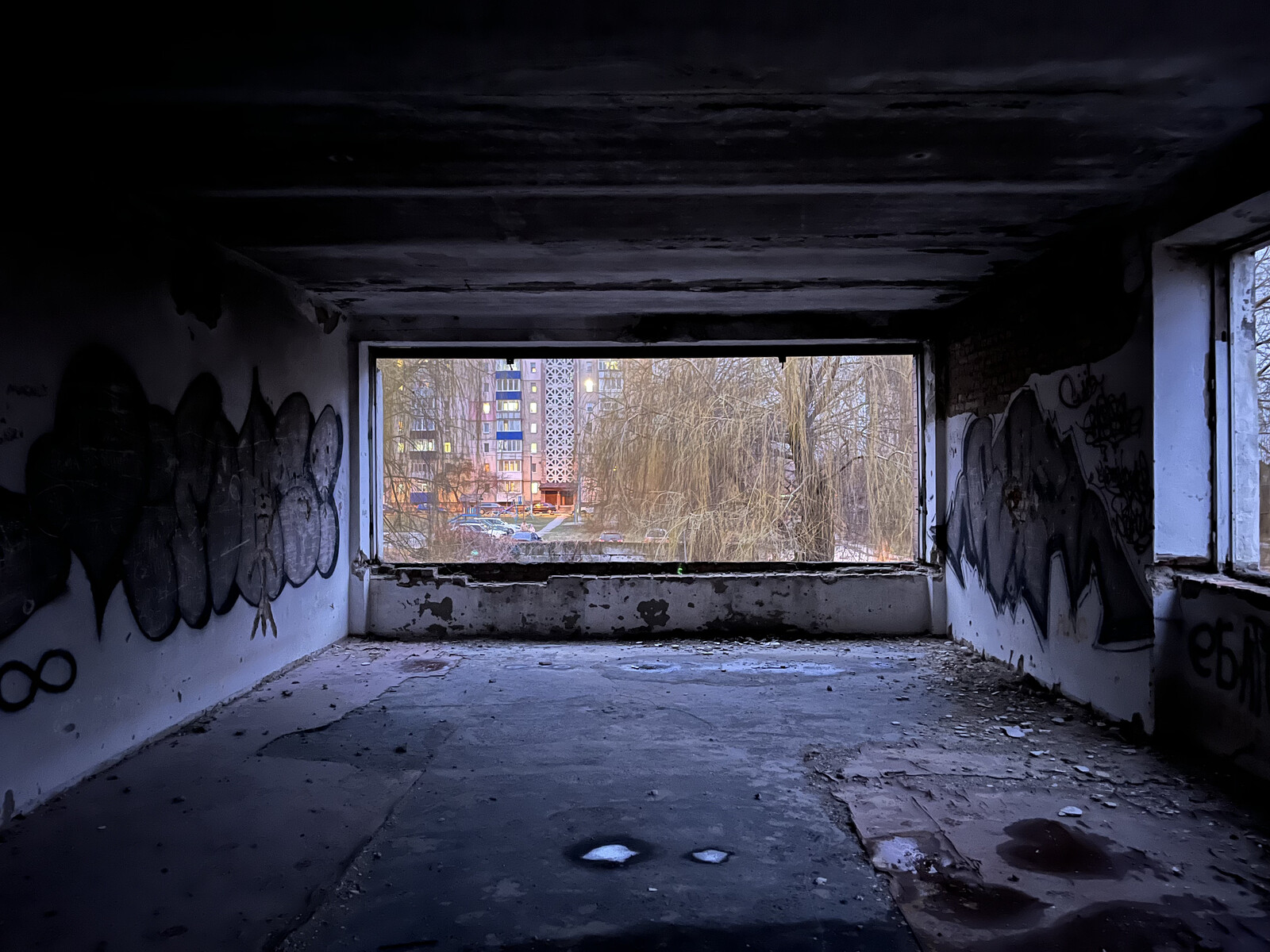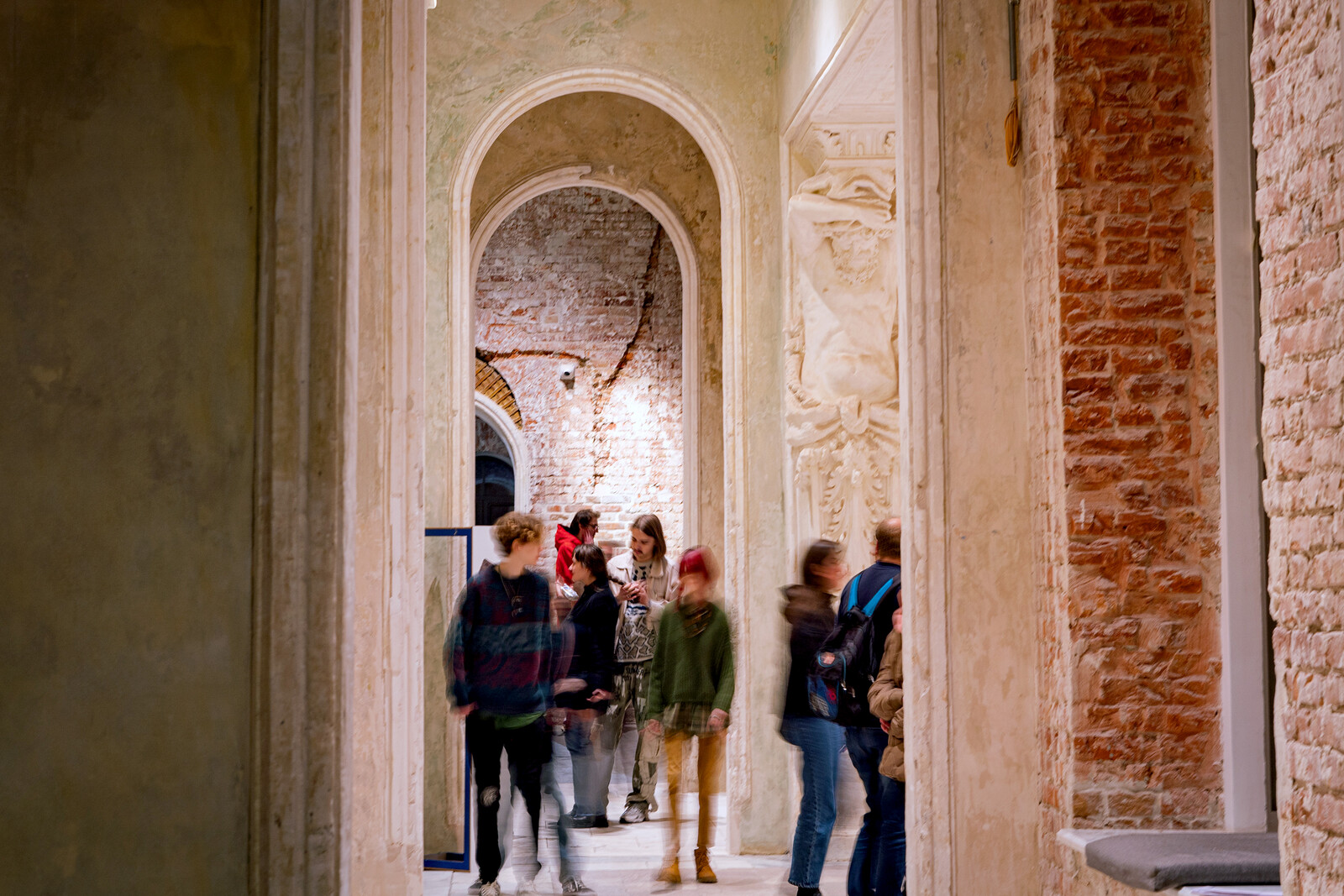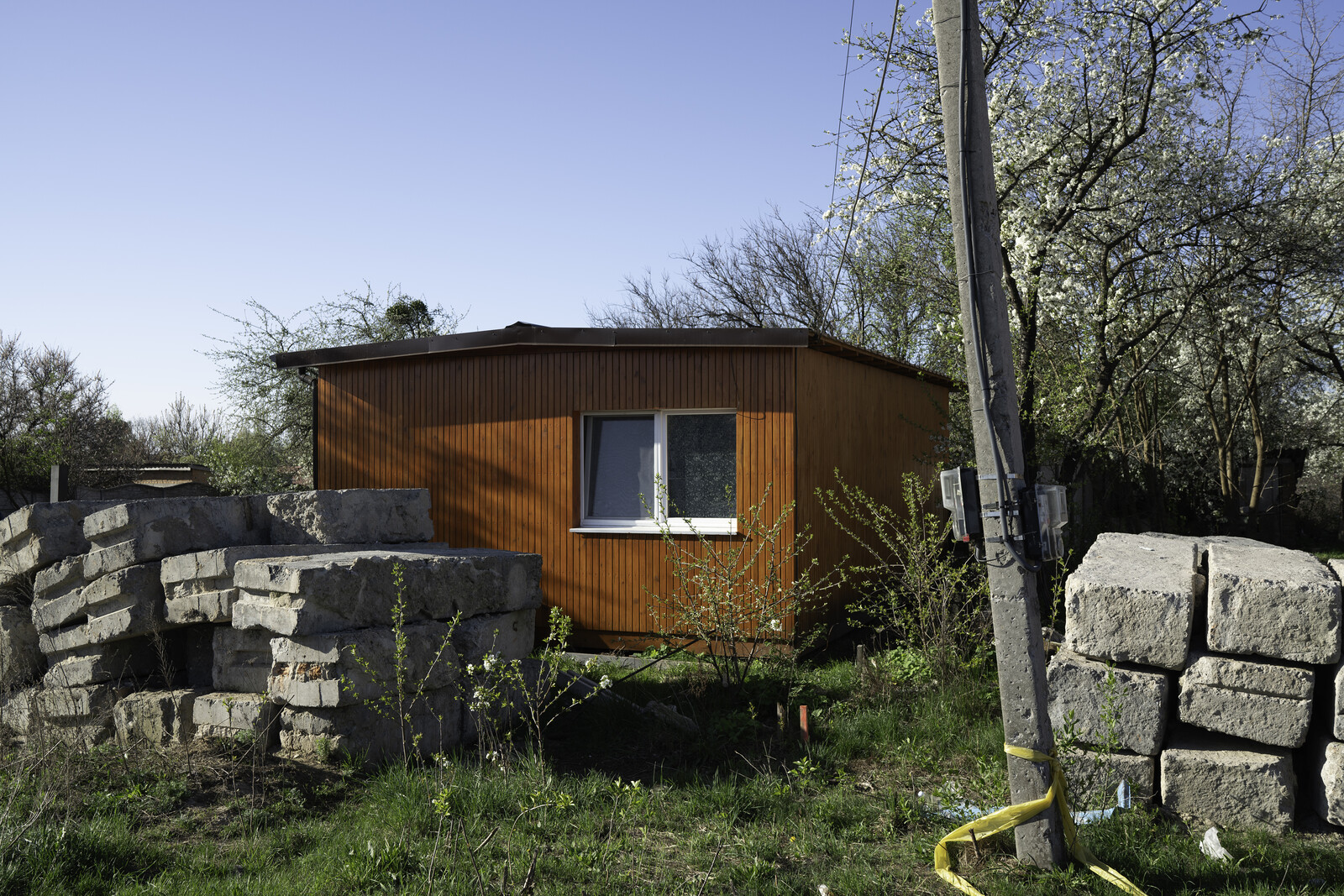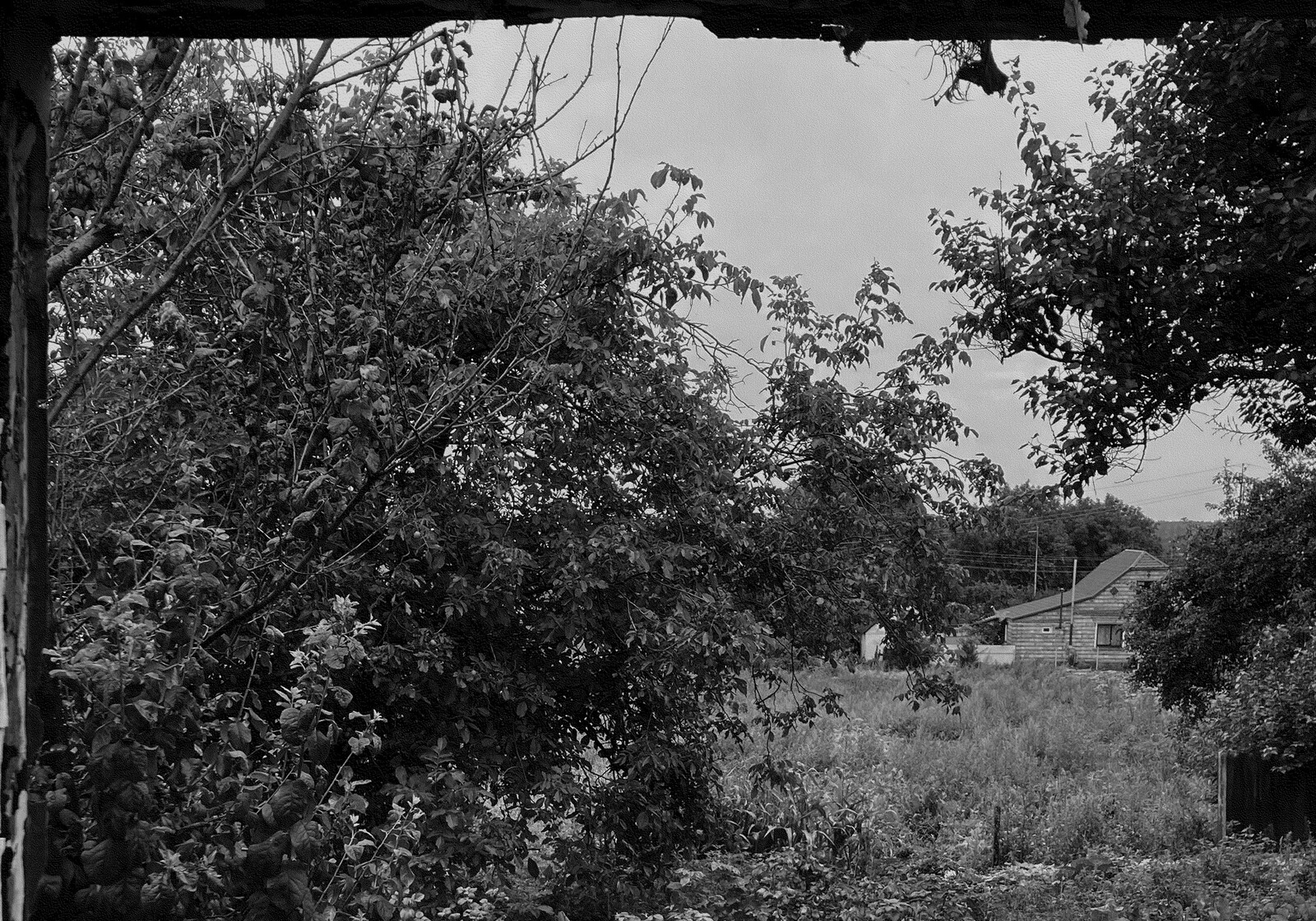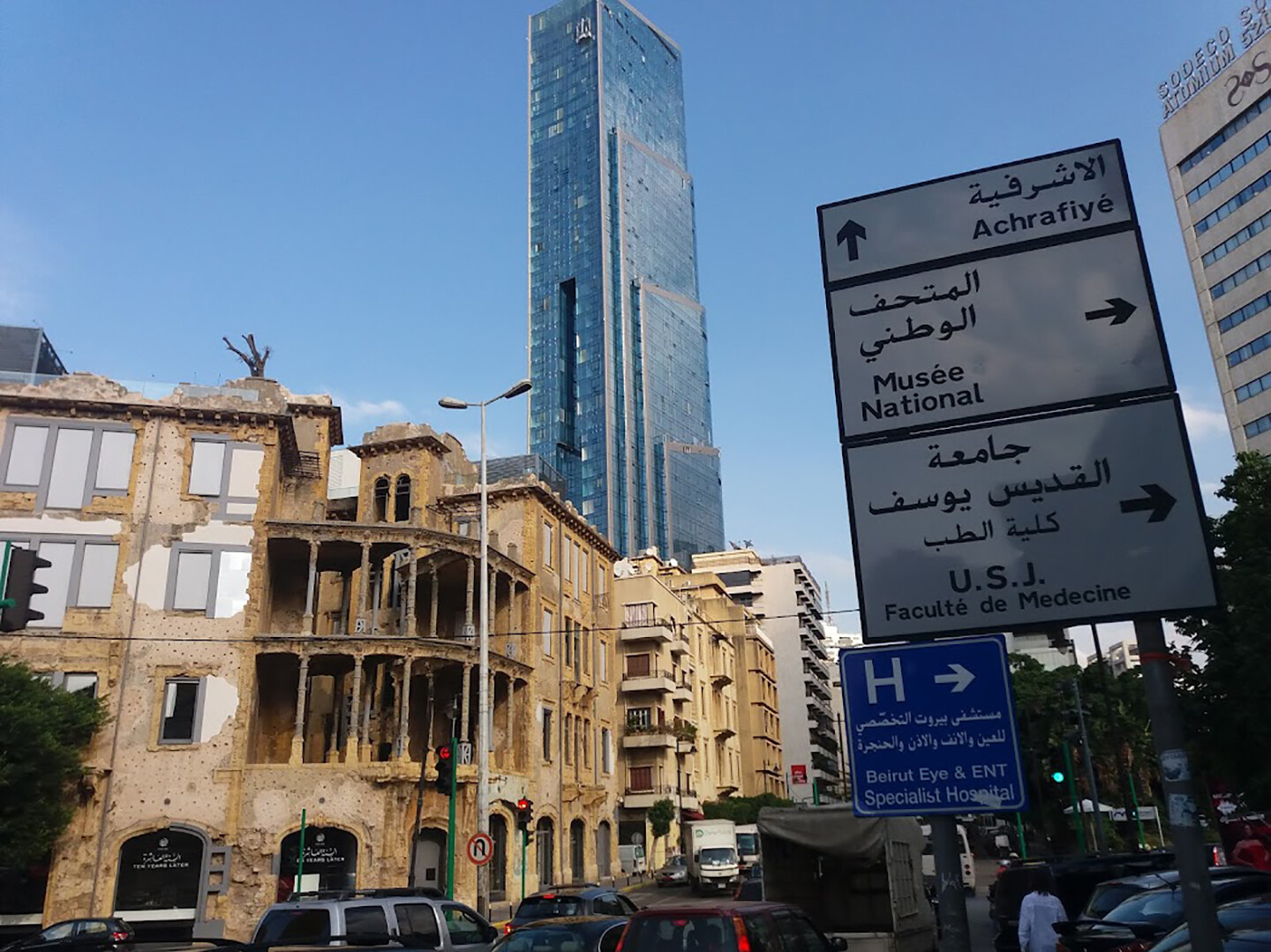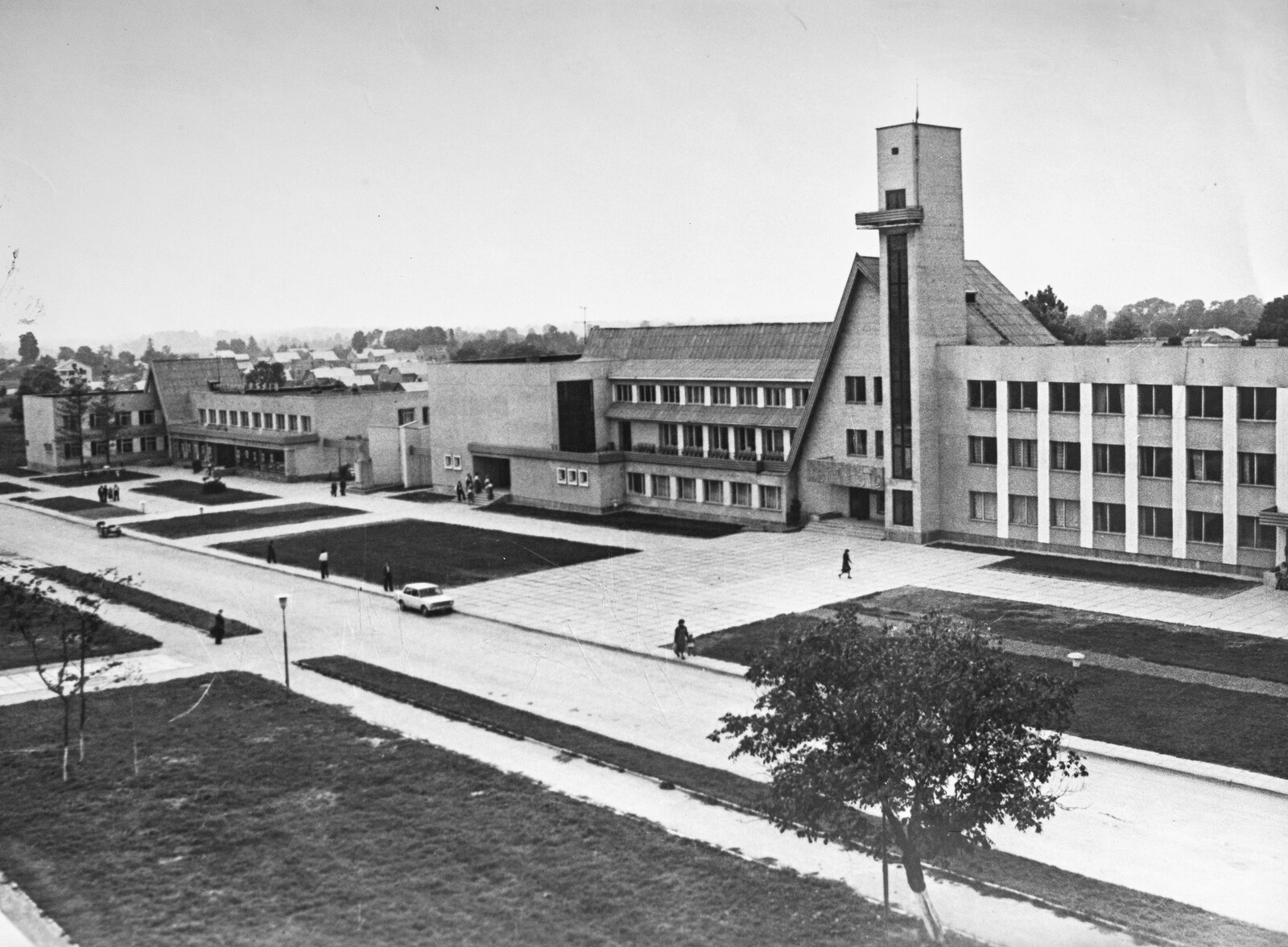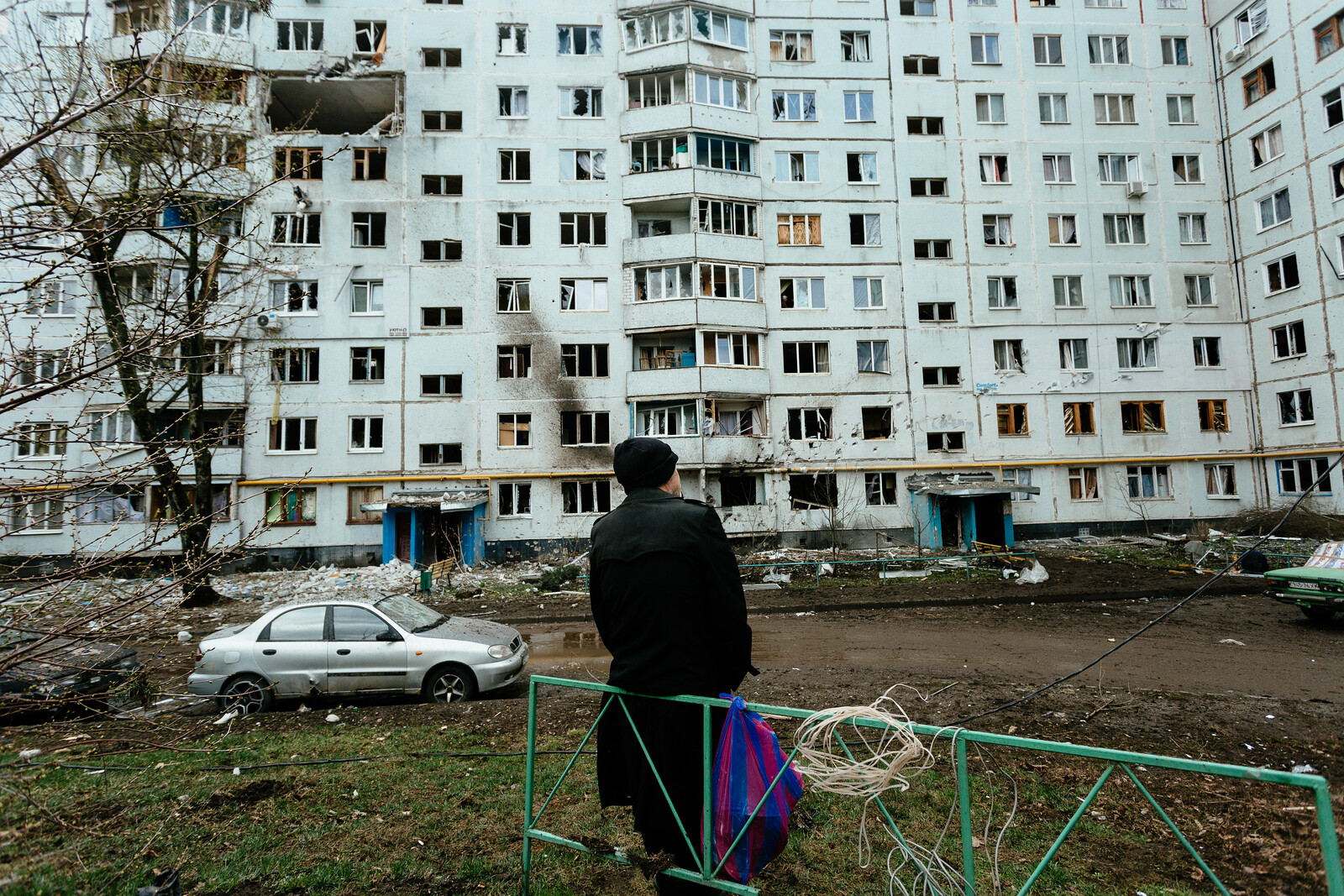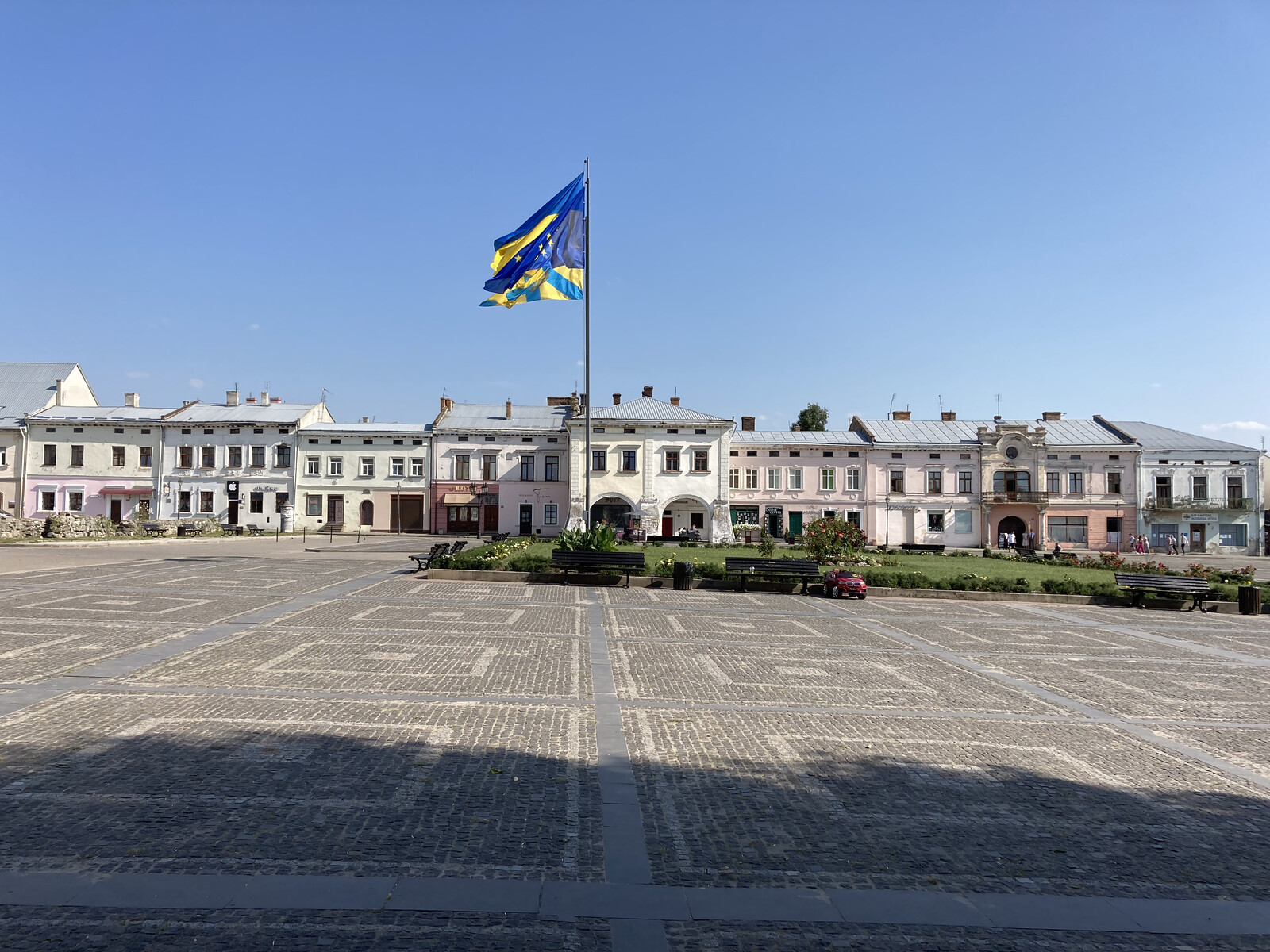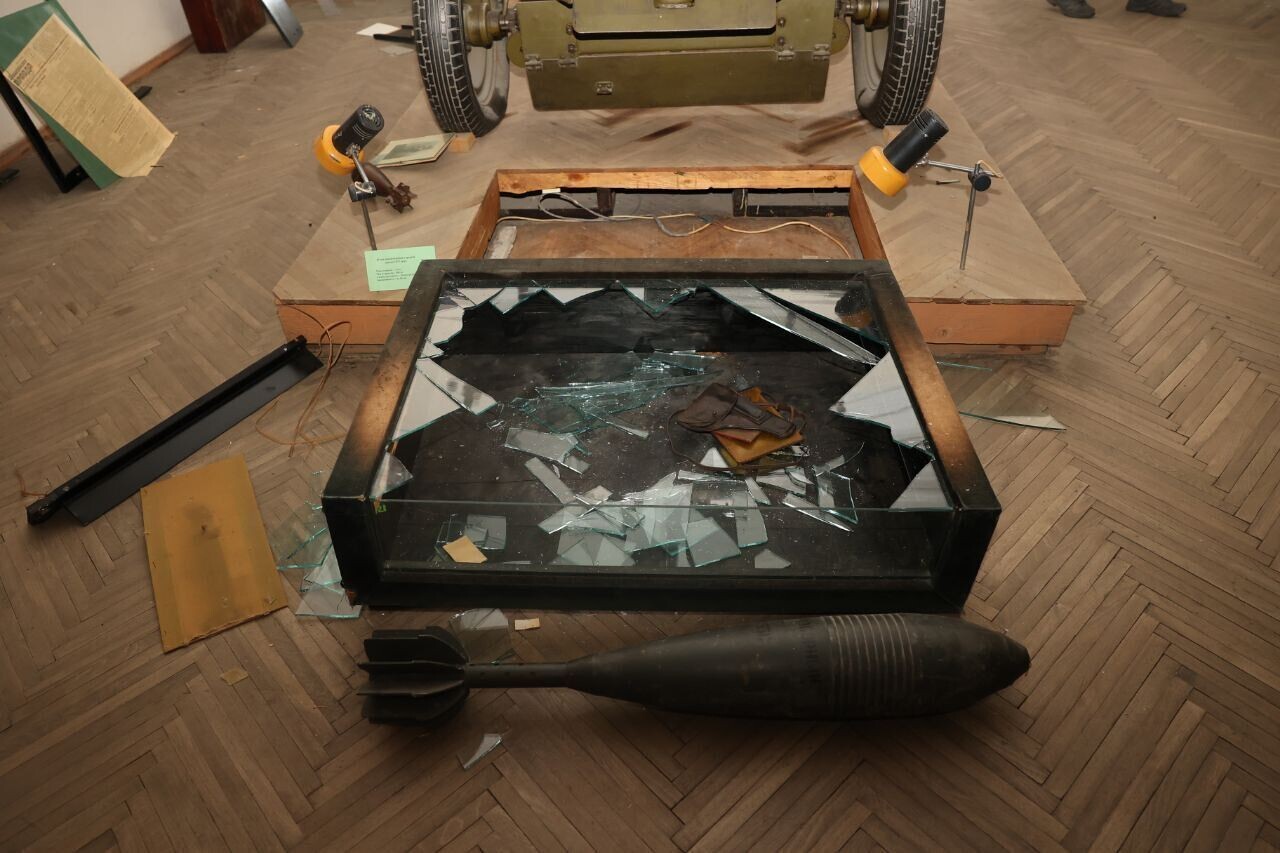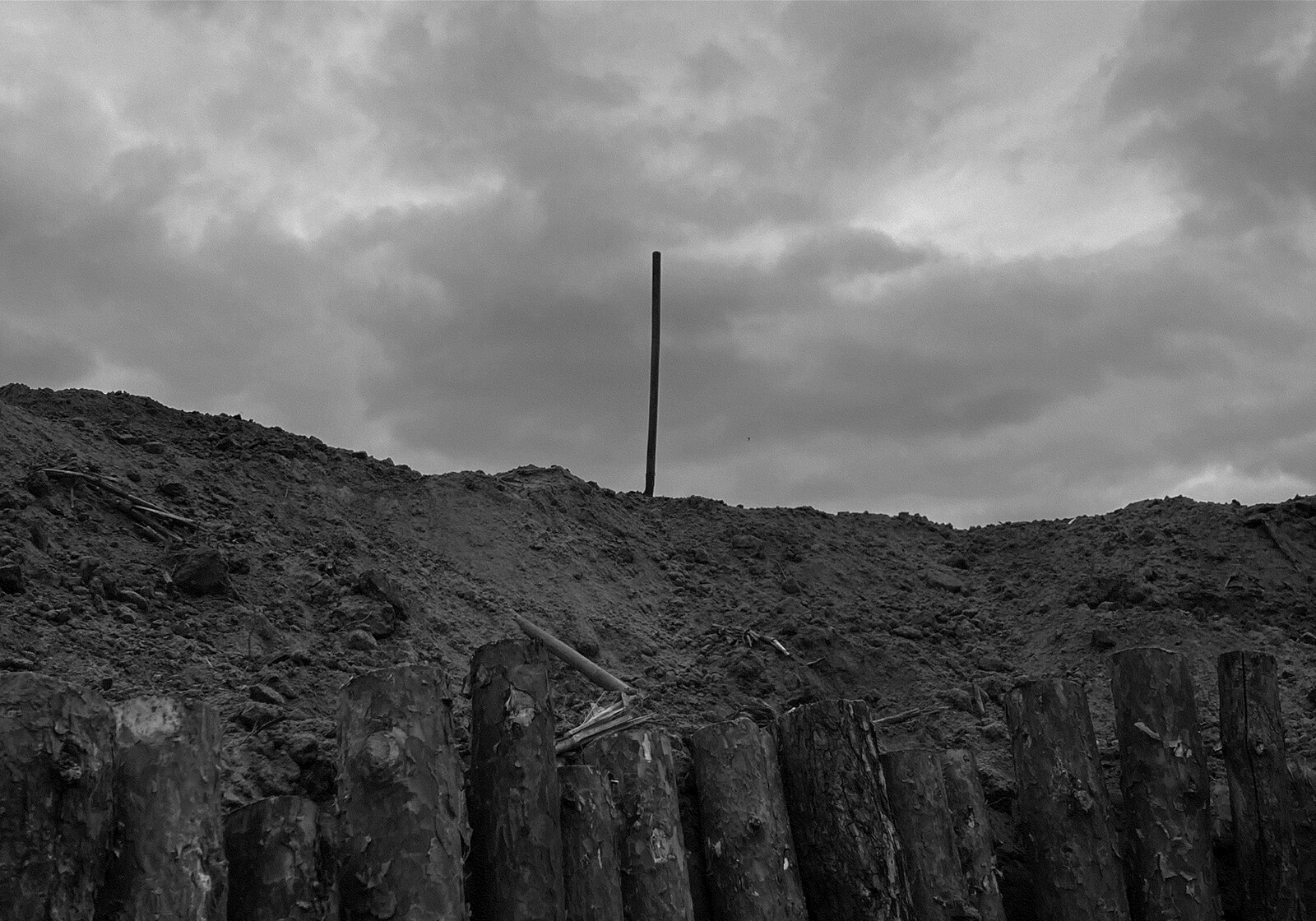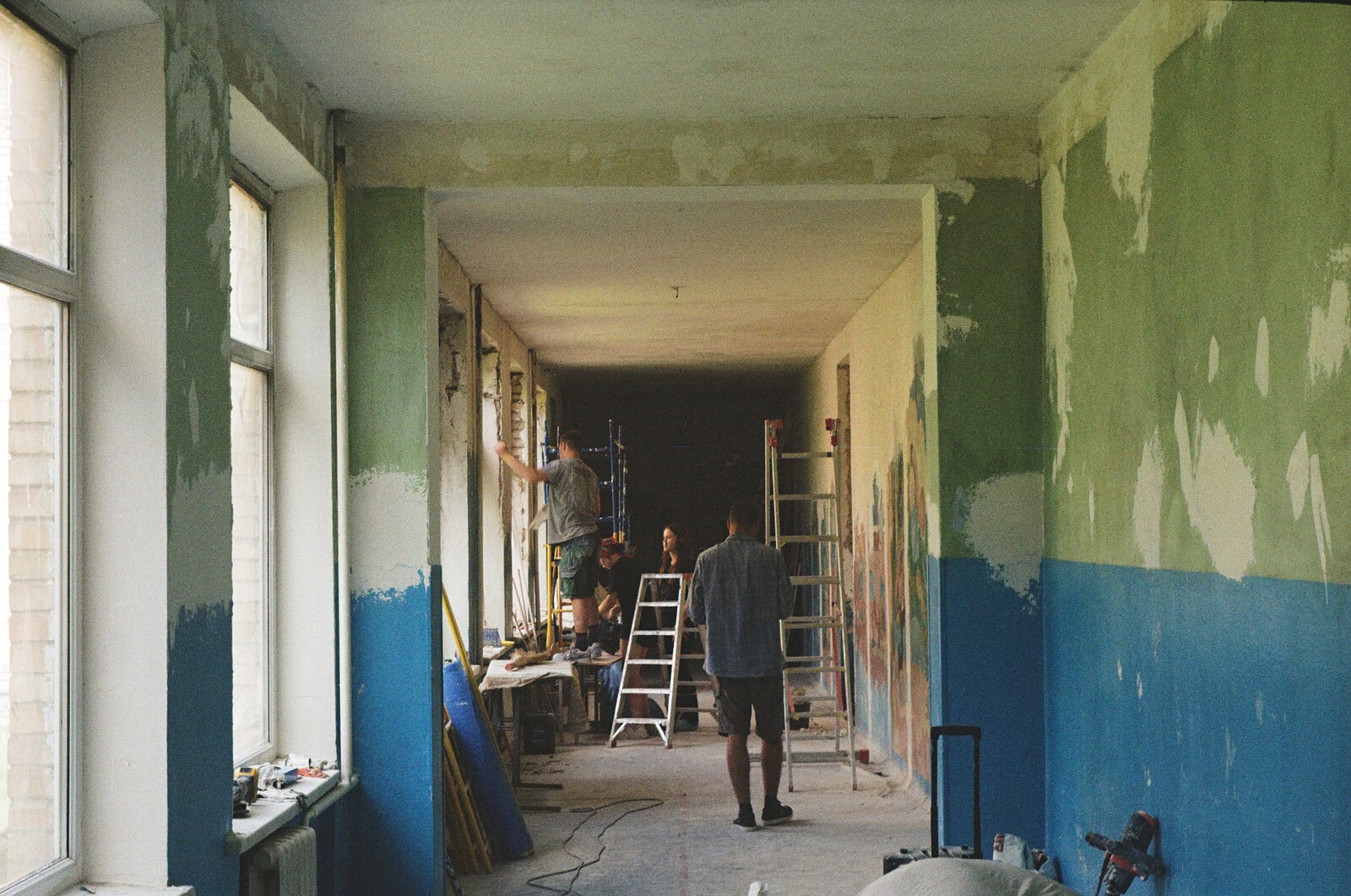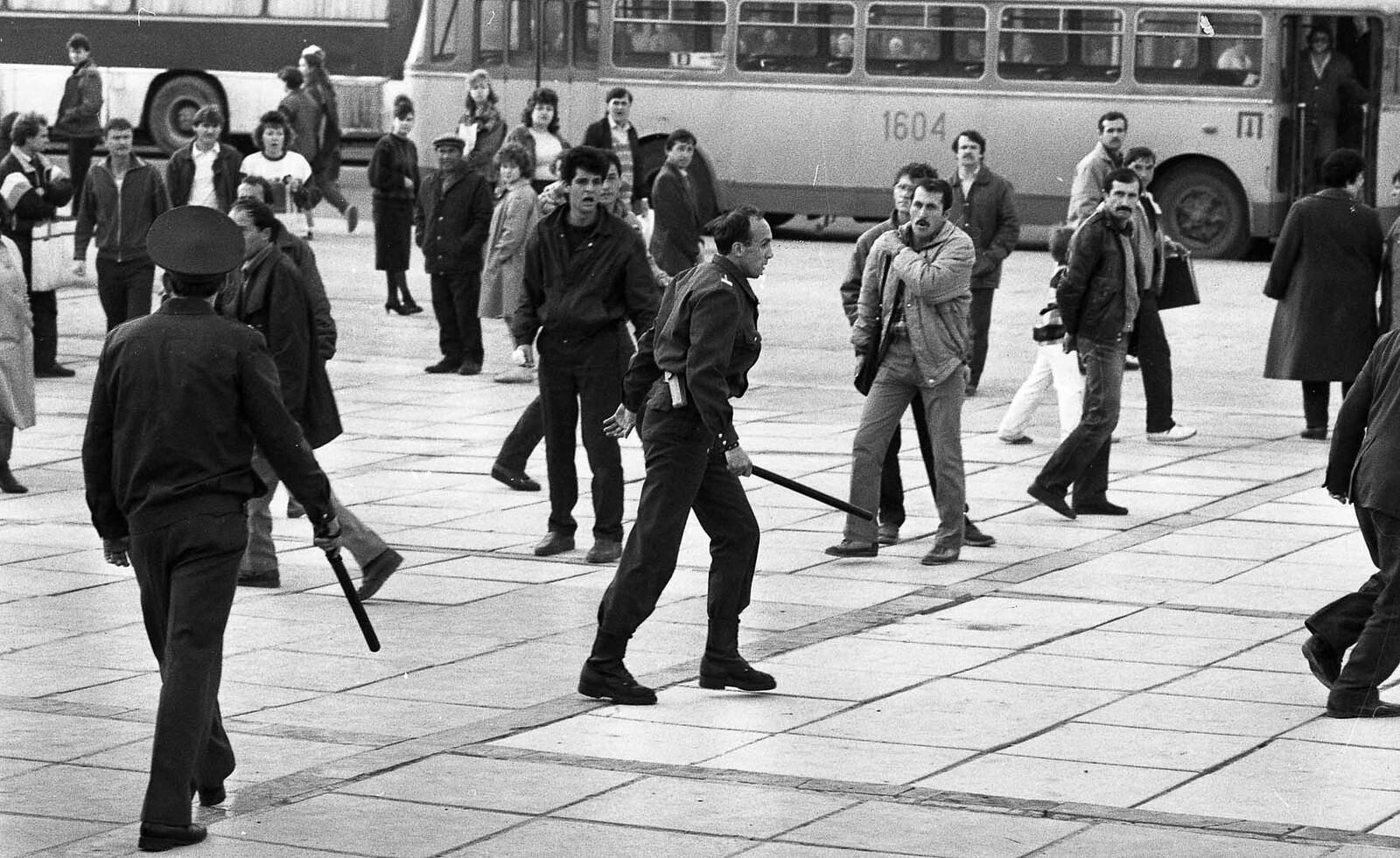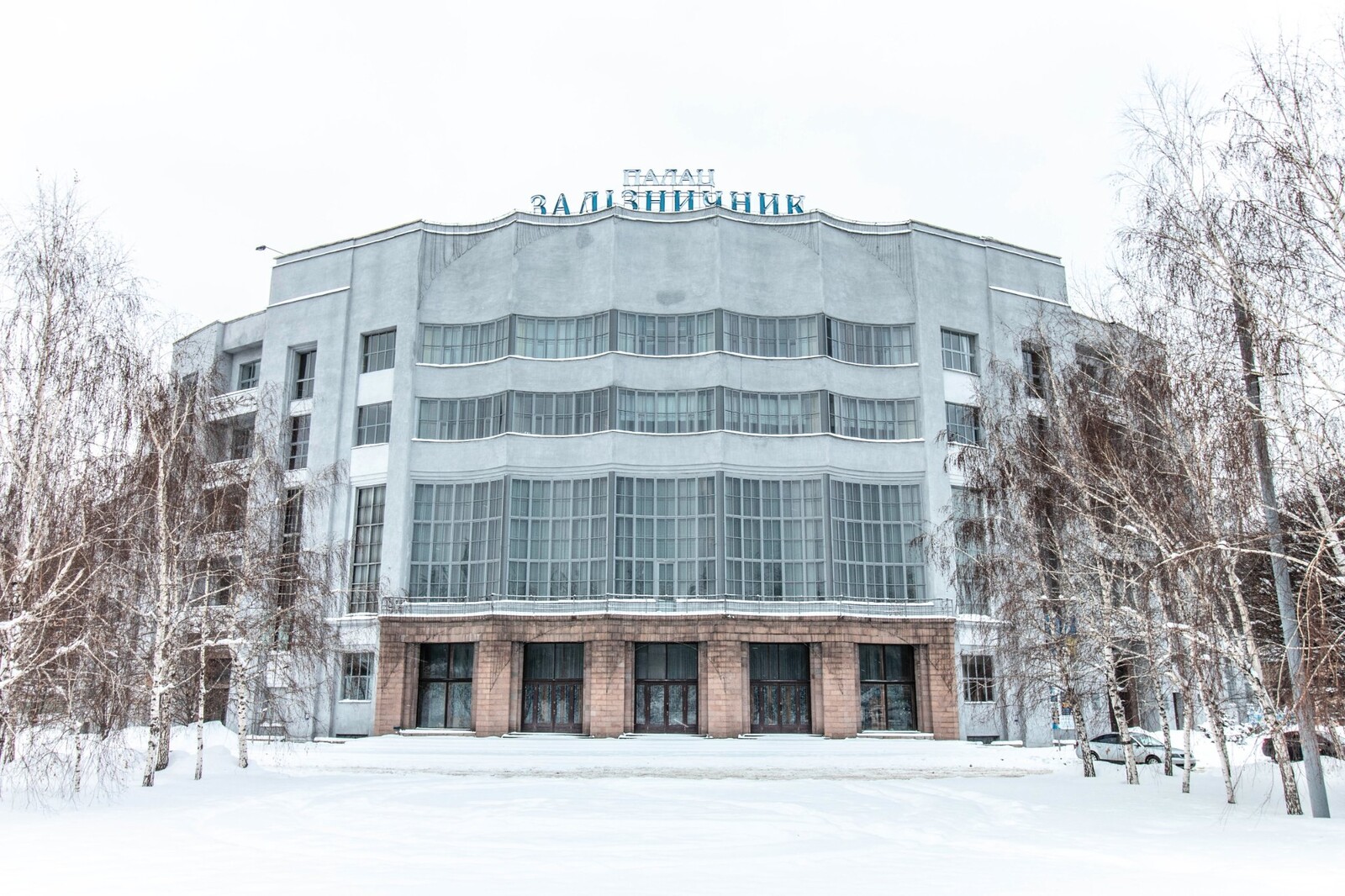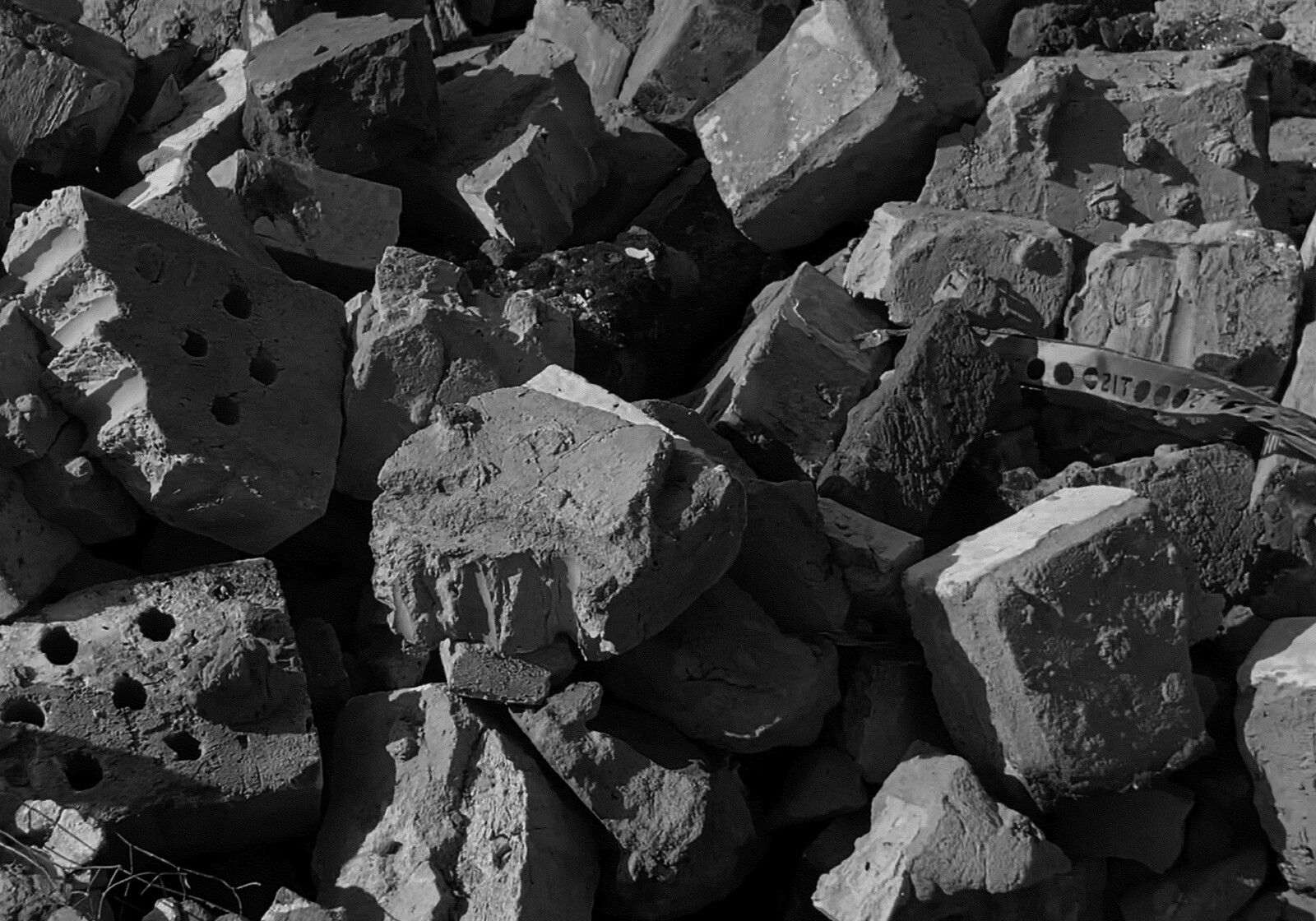KHARPP and Livyj Bereh are two organizations working to reconstruct the Kharkiv region. KHARPP focuses on windows and doors, Livyj Bereh are experts in roof replacement, and together they collaborate across different villages to restore homes. Combined, they have worked on over a thousand homes. Their work is based in de-occupied and formerly frontline villages north of Kharkiv, reaching up to the border with Russia. Ada Wordsworth from KHARPP and Kseniia Kalmus from Livyj Bereh came together in February 2024 to discuss how they began their work, the challenges they face, and their future plans.
Ada Wordsworth: We started working together in Kharkiv Oblast in the autumn of 2022. That was KHARPP’s first reconstruction project, but Livyj Bereh had already been working in Kyiv and Chernihiv. How did that begin?
Kseniia Kalmus: I was doing humanitarian aid in the Kyiv region, giving out food and medicine, and at some point started to collaborate with Vlad and Ihor, who were already calling themselves Livyj Bereh (which means “Left Bank” in Ukrainian). In the beginning of May 2022, Vlad called and said they were in the Chernihiv region and had the idea to reconstruct some buildings that had been damaged by the war. They knew that I had connections with an American charity, so they asked if I wanted to collaborate, to start a foundation together and find support. In the beginning, we were repairing roofs with slate sheets typical in post-Soviet countries called shifer. We weren’t doing that many houses, maybe ten or so. After a while, we realized that other organizations had started working in the Chernihiv region, and since we had a lot of contacts in the Kyiv region—having worked there in the spring of 2022, immediately after the region’s liberation from Russian troops—we decided to split our time working between them. We kept working in both areas until September or October 2022. But what about you guys? How did you get your start?
AW: At the start of the full-scale invasion, we were working with refugees in Przemysl, and also doing aid runs in Kharkiv, delivering ambulances and basic humanitarian aid. I was always really impressed and inspired by your Instagram posts about reconstruction work in the Kyiv and Chernihiv regions and had decided that we should do something similar once Kharkiv was liberated. It seemed like the most significant way to help people in the long term. When liberation happened in September 2022, we quickly started going around to villages and talking to people about what they needed. We ended up creating a Google form, posting it on a local Telegram chat, and telling people to fill it in if they needed repairs. Someone responded and we ended up replacing their windows. We made an Instagram post about it, you guys saw it, messaged me, and that’s when we started working together.
KK: Right, that’s when we met in Kyiv. Then, a few days later, we went to Kharkiv together and drove around villages close to the border, speaking to people in each and assessing their needs.
AW: We drove around so many villages that day, but ultimately, we made the same decision that we both wanted to work in Slatyne.
KK: I think each of us had our own reasons for why we chose Slatyne, but the main thing was that we met people who were open, who wanted to help us work there and help them. They were ready to collaborate. It’s also quite a big village that, while damaged, was still a place people could return to.
AW: About six months after we started working there, a friend who was still volunteering in Przemysl met a family from Slatyne who were returning from Germany because they had heard people were doing repairs in the village. It’s a lot of pressure when you hear things like that, but it’s also so nice that our help is concentrated. You can drive down a road in Slatyne and there are whole streets with your roofs and our windows. The village is now basically completely functional, with a post office, multiple working shops, and thousands of people living in it, compared to the two hundred who were there when we started working. There are a lot of reasons why it’s recovered so well, but at least part of that is the effort we’ve put in, the amount that we’ve repaired there.
KK: Slatyne was also a special place for me because on August 22, 2022, on Independence Day, I was in Kharkiv and tried to deliver humanitarian aid there. We got stopped at a checkpoint, and they wouldn’t let us proceed because the village was being hit so heavily. Slatyne was still on the frontline back then. From where we were standing, we could see the attacks happening, the smoke rising. So, when we went together a couple of months later and I saw the results of those attacks, I felt a real connection.
AW: I remember when we first went, it was the first time I had ever seen that level of destruction. Practically every house was destroyed or heavily damaged. Since then, we’ve been to worse villages, but at that moment, it was impossible to imagine anything worse. We met a guy who lived on the main street who told us that his family was the only one left on it, and that they were living in the banya in the back of their garden because their house had no windows or roof. I had never seen anything like it before, and it was so upsetting. I didn’t understand where the big charities were, why nobody was helping this man and his family. We ended up doing his windows and you did the roof. Now, when you drive up that same street, it’s completely full of people; pretty much every house is lived in.
KK: What about Prudianka and Tsupivka, what are your first memories there?1
AW: They were hell. You’d go to Prudianka and almost every house would be flattened. What made it even worse was that you could tell the village was once really pretty; the nature is pretty, with streams running through it. Even the name is pretty, like a fairy-tale village. Yet it was complete hell. Only twenty people were still living there. Even though there was a lot of destruction in Slatyne, it felt like it was fixable. But with Prudianka, it was hard to know where to start.
KK: After seeing the destruction in the Kyiv and Chernihiv regions, it was a bit easier in some ways, but still, the scale of hell in the Kharkiv region was terrifying. I don’t remember when we went to Prudianka for the first time, but I remember Tsupivka, because it was so empty. It was the first time we’d ever been to a village without a single person still there. I remember being stopped by soldiers there and asked what we were doing. We responded “We’re going to rebuild!” They looked at us like we were crazy and told us to make sure we stayed off the grass, because it was all mined.
AW: What have you found the hardest about your reconstruction work?
KK: I think it’s different for all of us. For Vlad, it’s communication with builders, which is his job. For me, it’s making the priority list each time. It’s easier now because there are fewer houses that need reconstruction in the villages where we work, but at the start they would give us a list of seventy houses and we’d have to choose fifteen or twenty to do. It was like a competition in which you know that you’re deciding the future of a family’s life. Even though there might be thirty families with an equally bad situation, you still have to choose between them. What about you?
AW: I agree. It’s easier now because we work through the local administration and they choose for us, but at the start, when people would just apply through the Google form, it was awful. We would go to ten or twenty houses per day and everyone was living in the most horrific conditions, but we would only have the money to help half of them. And even when you work with the local administration, people get missed. Last week a woman called me and said that she has been living in her basement with her husband for two years because they have no windows in their house and it’s too cold. I went to see them, and it was awful. We’re going to help them, but it’s so scary to think how many people there are like her who local administrations don’t know about. Then there’s also always the worry that these villages will be targeted again. They’re so close to the Russian border, so it could happen. If it does, I don’t feel like our work would have been a waste of time or money. We have given people some time to live in their homes in warmth and comfort, and that’s priceless. But the fact that villages like Slatyne are now full of people again and there could still be attacks makes me uncomfortable. Having said that, it is people’s own choice to return, and that has to be respected.
KK: Yes, if they’re choosing to return home it is because they’ve decided it’s the best thing. It’s their land. In Europe, they have to rely on support and money from the state. But it’s never enough, and they don’t have friends or relatives to rely on. In the villages, they have a community and feel more confident asking for what they need.
AW: Definitely. I wanted to ask more about the practical side of your work. How did you find builders?
KK: We wanted to hire locals to support the economy, since there’s no work in the villages and people need to feed their families. So, I just went on the local area’s Facebook page and wrote an advertisement saying we were a charity and looking for builders. We interviewed loads of people and hired some of them. It also made sense to hire people from the villages because it means that the people who are having their houses reconstructed know who the builders are. It also means the builders are more likely to complete the work to a higher standard than if we had hired a firm from Kharkiv.
AW: Our logic was similar. We found a window firm in the area and a contractor who has the same philosophy as us, and wanted to employ local people. She also occasionally uses our projects as a way to train people from the village; if she meets an unemployed person in one of the villages, she will bring them onto the team and teach them how to install windows, so that after the war they will have new skills.
KK: We quickly understood that you have to pay not just for materials, but also for labor.
AW: Exactly. Reconstruction isn’t just rebuilding homes, it’s making communities independent again, so they don’t just rely on aid boxes forever. I’m also interested in your decisions regarding materials. I always feel so much pain when we have to replace beautiful, traditional wooden windows with plastic ones. People want the plastic ones, not least because they are sturdier and more likely to survive in case of attacks. But they do clash with the traditional architecture of Ukrainian villages, which breaks my heart. That’s why I love how you guys use this dark grey metal for your roofs, which blends in with the surroundings.
KK: When we first started doing roofs, we used shifer because it’s what people had before and it’s what they asked for. Then Vlad had the idea to use metal, because it’s safer. If there is another bombing, the shifer panels would lift up, fall down, and break. But the even if the metal breaks, it’ll just create small holes that can be covered by a special kind of tape. You don’t need to replace the roof again. We chose a grey material because we wanted something neutral, which would fit the surroundings. And now, when people do repairs in Slatyne, Prudianka, and Tsupivka through eVidnovlennia, they choose the same materials and the same color that we use.2
AW: It’s amazing the impact you have had on the appearance of the village. Whole streets in Slatyne have your grey metal roofs.
KK: Those are my favorite streets, and when I feel sad or hopeless, I go to them to remember how much we have done.
AW: It’s also so nice to see houses where you have done the roof and we have done the windows, and to see how successfully we have collaborated.
KK: Yes, that’s so satisfying; you see how much just two organizations can change people’s lives. I wanted to ask, have you guys met people who collaborated with Russia? How have you dealt with that?
AW: That’s a hard question to answer. We’ve met people who other people have accused of collaborating with Russia. There was one guy who asked us for help, but the head of the village told us not to do it because he had stayed under occupation and continued to work at the gasworks plant. To me, that doesn’t seem that bad: it’s an essential job like being a doctor or a nurse; if there was no gas then the elderly people who had also stayed in the village would die of cold. But we also didn’t want to damage our relationship with the village administration. We didn’t do his house, and I still don’t know if that was the right decision. What is your experience of this?
KK: In Tsupivka, the first house we did was for an old man who we met on the street. He was crying and begged us to help, and we did. Now, almost a year and a half later, some people still tell us that he helped Russians while the town was under occupation. We didn’t know that at the time, we just wanted to help people who needed help. It made me really uncomfortable, but I have to remember that even if he did collaborate, helping him with his roof doesn’t make us bad people.
AW: There’s an extent to which we have to recognize what our responsibilities are. We aren’t the government or the police; it’s not our job to work out who has collaborated or to punish them. In general, I would rather help people with the repairs they need, and if the police then discover that they have collaborated, they can arrest them.
KK: Do you envision continuing this work?
AW: For as long as we receive donations, and for as long as the need remains, we’ll continue. There’s always the fantasy that one of the big charities is going to come and take over and make us obsolete, and that they would be able to work on a much larger scale. But that hasn’t happened in any meaningful way in the areas where we operate.
KK: We feel the same way. Soon we will have repaired the roof of every inhabited house in Slatyne. We hope that we’ll be able to continue our reconstruction work in other areas.
Prudianka and Tsupivka are the villages immediately to the north of Slatyne, closer to the Russian border. In one direction, Tsupivka was the closest village to Kharkiv to be occupied, and both it and Prudianka suffered damage to 90% of all buildings.
eVidnovlennia (“eRebuild”) is a Ukrainian government scheme that allows some people to claim compensation for damaged homes.
Reconstruction is a project by e-flux Architecture drawing from and elaborating on Ukrainian Hardcore: Learning from the Grassroots, the eighth annual Construction festival held in the Dnipro Center for Contemporary Culture on November 10–12, 2023 (2024), and “The Reconstruction of Ukraine: Ruination, Representation, Solidarity,” a symposium held on September 9–11, 2022 organized by Sofia Dyak, Marta Kuzma, and Michał Murawski, which brought together the Center for Urban History, Lviv; Center for Urban Studies, Kyiv; Kyiv National University of Construction and Architecture; Re-Start Ukraine; University College London; Urban Forms Center, Kharkiv; Yale University; and Visual Culture Research Center, Kyiv (2023).
This conversation took place in February 2024. Since then, the new Russian assault on Kharkiv Oblast led Kseniia to reorient the focus of her attention to FPV drone production for the Ukrainian Armed Forces. The drones she makes are now used to defend the same villages she had been rebuilding as part of Livyj Bereh. KHARPP continues its work in the region.
